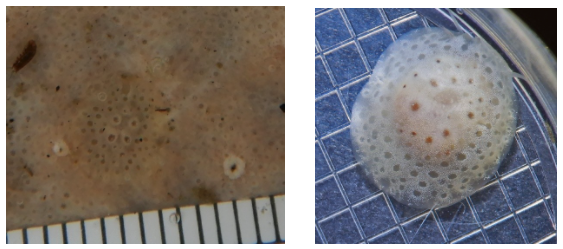When you go to the ocean, where do you look for marine life? Some people may explore tide pools, while others fish in the open waters, but long-time educator, mentor, and marine biologist Nancy Treneman looks for hidden species in the easily overlooked areas of our beaches–and for the last four years, she’s been contributing these unique species to the Ocean Genome Legacy’s (OGL) collection.
Among her favorites are velvet snails of the family Velutinidae. These masters of disguise hide their shells in cleverly colored folds of their bodies, making them look more like sea slugs, sponges or their ascidian prey rather than typical snails. This can make them very tricky to identify. To help her recognize and identify these sneaky snails, Treneman uses OGL’s DNA barcoding service.

DNA barcoding uses the sequence of a special gene called mitochondrial cytochrome oxidase I (mCOI) to identify species. Each species has a unique mCOI sequence so scientists can use this sequence to identify them, similar to the way grocery stores use barcode labels to identify products at the checkout counter. In fact, this method is also similar to the way that health centers test for the virus that causes COVID-19. Being able to recognize and identify species is important because it is the first step to understanding them and their critical roles in the environment!
OGL is thrilled to work with skilled researchers like Nancy Treneman to better understand the mysterious species of the sea.
Interested in helping to advance our scientific understanding of marine species and to maintain and preserve marine biodiversity? Support OGL’s research here!
